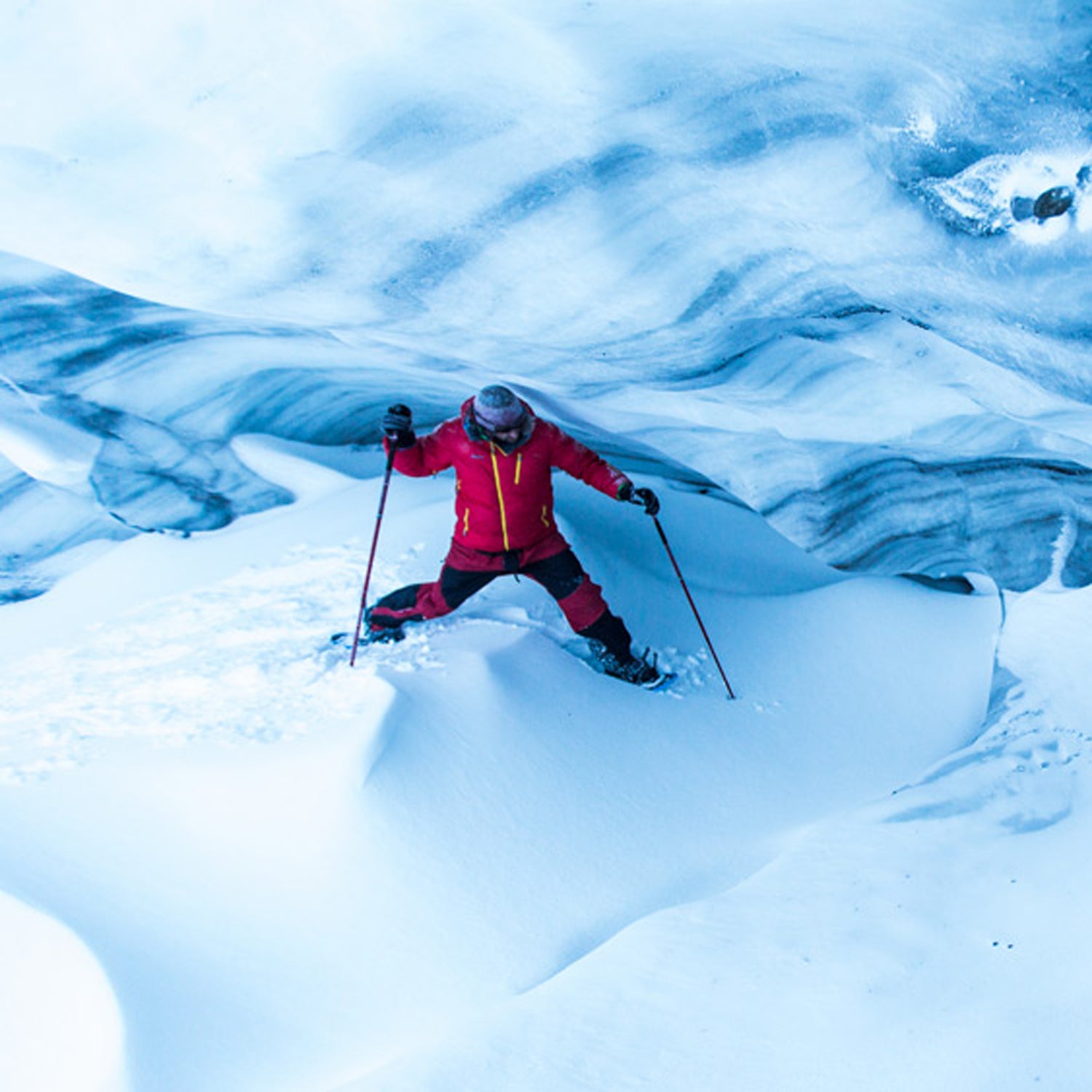Start with the three-layer principle: up top, you'll want a form-fitting baselayer, a warm-breathable midlayer, and waterproof outerwear.
The logic is simple. If you're active, sweat is the enemy. Soak yourself and you're going to get cold no matter how puffy your down jacket is. Layering gives you the flexibility to react to changing temperatures and exertion levels (chairlift versus a mogul run). The three-layer system wicks sweat, provides insulation, and keeps out the elements more effectively than a single layer or too many layers.
Note: If you already have a layering system that works, stick with it. The following advice is based on my experience testing gear for Outside and interviews with pros, but the general rules can be modified.
Baselayer: Wicks Sweat
A good baselayer feels cozy next to your skin, and will keep you warm and dry. It should be almost skin-tight to avoid uncomfortable bunching. Never wear cotton in the winter: while it can be comfortable for a casual summer hike, it dries too slowly to keep you warm when temperatures plummet. Instead, think synthetic materials or wool for both your top and bottom, which dry quickly and won't be wet and clammy against your skin.
If you sweat a lot, go with a synthetic baselayer. I've found it wicks moisture away from your skin much more effectively than wool. When buying this layer, the brand is less important than the material the company uses. Polartec's Power Dry fabric wicks moisture faster than any other synthetic on the market, and you'll find the material in a broad range of apparel including options from Patagonia and Marmot.
If you run cold and need a warm baselayer, look to wool. High-quality merino is lightweight, stink-proof, and toasty. Because of its odor-resistance, it's also a good option for backcountry skiers who plan to spend days in the wild without washing their gear. We like options from Icebreaker and SmartWool—these industry leaders use quality materials and both know how to cut a baselayer well.
Midlayer: Keeps You Warm
A midlayer provides the bulk of your insulation—and warmth—and which one you buy depends on your sport of choice. If you run cold or plan to ski exclusively at the resort, you'll want a toasty midlayer. If you plan to do a lot of backcounrty skiing or other high-output activities, opt for something that's lighter and more breathable.
Generally, the thicker the midlayer—or the higher the loft—the warmer it's going to be. It used to be that a thick midlayer would sacrifice breathability, but some companies are starting to figure out this tricky balance. Take Black Diamond's Coefficient Hoody, which traps plenty of heat but also moves moisture away from your skin.
For the truly breathable workhorse, look to Patagonia's new Nano-Air hoody. I found this layer superior to anything else I've used—including Helly Hansen's H2Flow technology and Polartec's Alpha insulation—when it comes to breathability and stretch. It shines during high-output days spent skinning, climbing, or hiking.
Outerlayer: Blocks Rain and Wind
Your outermost layer should keep the rain and wind out. When buying a shell, pay attention to breathability. Unless you're skiing exclusively in the Pacific Northwest, a 100-percent waterproof hardshell will leave you soaked on the inside if it can't move sweat away from your body. I personally like the North Face Fuse Brigadine and the Marmot Bootpack, two waterproof-breathable shells that kept me dry—inside and out.
I pair a non-insulated shell with a midlayer like the Patagonia Nano-Air or Black Diamond Coefficient. This is the most versatile solution, as lightweight outerwear will protect you from the wind and rain, but it's also easy to stuff in a pack when temperatures rise.

